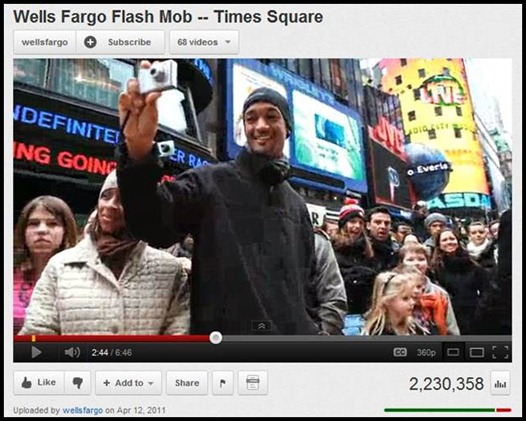 Banking sector has always been very careful of adopting new technology and rightly so. While technology will eventually make life convenient for the consumer, the banks need to venture in to new space only when they are absolutely sure that the financial data of the consumers are not compromised at any stage.
Banking sector has always been very careful of adopting new technology and rightly so. While technology will eventually make life convenient for the consumer, the banks need to venture in to new space only when they are absolutely sure that the financial data of the consumers are not compromised at any stage.
The Truth
While 800 million people may be on Facebook, it would be interesting to see how many of them would actually go ahead and use this platform or any other social media platform for that matter for actual banking transaction.
A good indicator of this comes from the Javelin Strategy & Research’s latest report that investigates consumer personal finance behaviors toward social media. According to their report, only one in ten consumers are comfortable using social media sites to review or check account balances.
What’s on offer?
But that doesn’t mean that the platform cannot be used by banks at all. In fact, nothing can be further from the truth. In the weeks of protest against Bank of America’s announcement and retraction of $5 debit card fees, Bank Transfer Day and Occupy Wall Street protests, Twitter volume jumped threefold at the customer service "handles" of most banks. Amongst them, Citibank was able to resolve almost 36% of its customer service conversations within Twitter.
So what all can banks look to do on social media? Well the answer is lots. Other than the usual customer service, new product information and lead generation, few banks have shown that the platform can transform a bank in to something most people come to Facebook and such platforms in search of, a friend.
Transcending the brand
Imagine a 150 year old bank trying to woo the youth of today that spends most of its time watching the twitter timeline or YouTube videos on Facebook. It would probably need some real soul searching and courage to be able to handle such a task. but that is exactly what Wells Fargo did. Considered to be one of the early adopters of social media, Wells Fargo realized that social media is the best way for the bank to learn the language that the youth speaks today. Once the decision was made, the bank went the whole hog. they even announced their new presence in Manhattan through a flash mob video which they posted on YouTube, which has garnered over 2 million views till date.

Click the image to watch the video
Creating a knowledge pool
Imagine a 28 year old trying to grapple with finance related problems and all that s/he can get is page after page of complicated terminology that would make zero sense to her/him. What would be the best way to address her/his concern? Let her/him relate to someone else’s story which is same/similar to her/his situation and give them the solution that would solve their problem. Once the bank is able to address the consumer’s simplest yet biggest problem, the connect is established. And one novel way of doing this is to create a shared knowledge pool. ING Direct, for example, publishes the "We the savers" blog to promote its savings products, specifically to attract young professionals. Customers are invited to comment on the blog and integrate savings tips into the search landing page. Thus, helping the readers relate to a situation and those solving their problem.

ING Direct Blog ‘we the savers’
Crowd sourcing for better service
Crowd sourcing is one of the best possible utility of social networking sites. Imagine tapping into 40 million responses without having to pay anything? This is the true power of platforms like Facebook and Twitter. And using these data to improve your reach and service is but a natural extension. Banks can use these platforms to conduct opinion polls/surveys on Facebook and also reward the participants. For example, Citibank has asked questions such as ‘Where would you like to see the next Citibank ATM in Bangalore?’ and ‘Which utility bill would you like to get cash-back on?’ The answers to these questions helps a bank understand customers’ requirements and act accordingly. This not only makes the bank reach to its clients but also give them exactly what they want.
Overcoming Fears
This is one of the most important aspect that needs to be addressed. For youth today, banking process is one of the most complicated things. Although they might be pros at handling multi processor super intelligent laptops, banking is still something that needs to be understood very carefully. It is not something one can do on a hit and trial basis. Social media is emerging as a cultural change, not a fad. And this is a positive tool that can be used to alienate their fear. This is the place where the bank can become the friend who helps them with their money. Example of this comes from HDFC Banks ‘Money Matters’ posts on its Facebook page. In these posts, the bank attempts at explaining complex banking and financial problems in simple manner.

HDFC Bank’s Money Matters Post on Facebook
Social media is the next frontier for financial institutions and consumer relationship. In ten years times, this platform will become as important as ATMs and Mobile banking system are today. But just like mobile and net banking had to be patient and adopt a wait and watch policy, so to must banks be with social media. Slow and steady will definitely win them the race.
Comments
Tags: Bank, blog, crowd sourcing, Flash mob, HDFC, ING Direct, Wells Fargo


[…] Today, a large segment of these institutions are waking up to the proven potential of social media in engaging audience on a one-on-one basis. Internationally, companies operating in the finance sector have already identified social media as a crucial element in the marketing mix. Campaigns are either exclusively being run on social media or in confluence with the traditional media. Needless to say, the very nature of a financial service institution is such that it requires a personal touch in addressing the wants, requirements and scopes of an individual’s monetary needs. Social media enables such brands to bridge the gap in remarkable ways. To gain a deeper insight into how social media can benefit financial institutions, click here. […]
[…] Banks have actively taken a step to scratch the surface of the potential in social media. Study indicates that private banks are leading the race followed by a few large public sector banks. […]